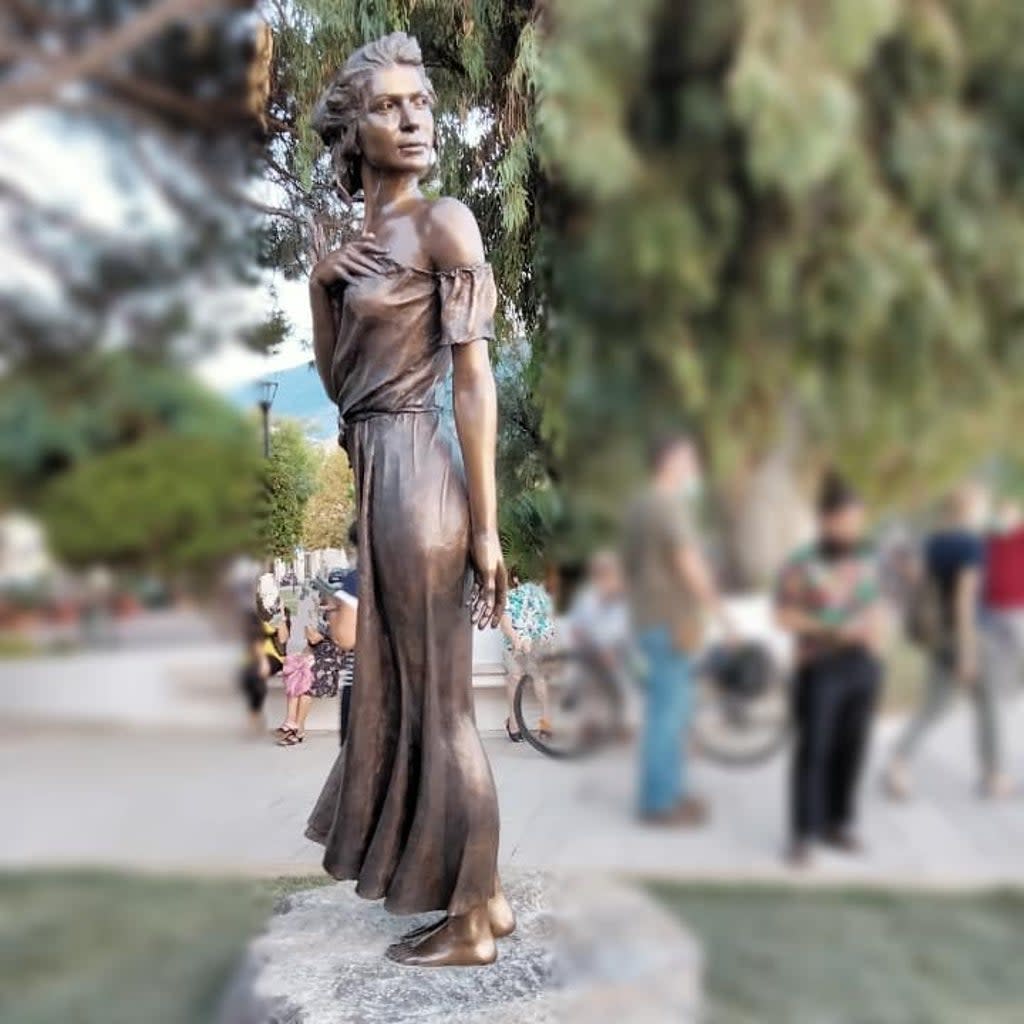Sexism row in Italy after bronze statue of scantily-clad woman unveiled by group of men

A bronze statue of a scantily-clothed woman from a famous 19th-century poem has triggered a sexism row in Italy.
The statue of the woman in a transparent dress was unveiled on Saturday in the town of Sapri by an entourage of men, including former Italian prime minister Giuseppe Conte.
The statue is sculptor Emanuele Stifano’s tribute to poet Luigi Mercantini's poem La spigolatrice di Sapri (The Gleaner of Sapri). The poem is based on Italian revolutionary and socialist thinker Carlo Pisacane's failed expedition against the Kingdom of Naples in 1857, where 300 people lost their lives.
Calling out what they described as the sexism of the artwork, several Italian politicians have demanded that the statue be “knocked down”.
Laura Boldrini of the Democratic Party said the statue was “an offence to women and to the history it should celebrate”.
“But how can even institutions accept the representation of women as a sexualised body? Male chauvinism is one of the evils of Italy,” Ms Boldrini wrote on Twitter.
La statua appena inaugurata a #Sapri e dedicata alla #Spigolatrice è un’offesa alle donne e alla storia che dovrebbe celebrare.
Ma come possono perfino le istituzioni accettare la rappresentazione della donna come corpo sessualizzato?
Il maschilismo è uno dei mali dell'Italia. pic.twitter.com/2msLhgJvso— laura boldrini (@lauraboldrini) September 26, 2021
“Once again, we have to suffer the humiliation of seeing ourselves represented in the form of a sexualised body, devoid of soul and without any connection with the social and political issues of the story,” a group of female politicians from the Democratic Party’s unit in Palermo said in a statement calling for the demolition of the statue.
Monica Cirinnà, a member of the Senate, criticised Stifano’s work and rallied behind her colleagues to seek its removal.
“A slap to history and to women who are still only sexualised bodies. This statue of the Gleaner says nothing of the self-determination of the one who chose not to go to work to take sides against the Bourbon oppressor,” she wrote.
A #Sapri uno schiaffo alla storia e alle donne che ancora sono solo corpi sessualizzati Questa statua della Spigolatrice nulla dice dell'autodeterminazione di colei che scelse di non andare a lavoro per schierarsi contro l'oppressore borbonico.
Sia rimossa! @DonnePd @pdsicilia pic.twitter.com/2qv8tP7FTN— Monica Cirinnà (@MonicaCirinna) September 26, 2021
Sapri mayor Antonello Gentile said that “no social or political party has criticised the work or distorted the concept of work created by the artist”.
The sculptor defended his work through a statement on Monday, where he claimed that he covered the human body “as little as possible, regardless of gender” whenever he made a sculpture.
In the case of the Gleaner of Sapri, Stifano said he “took advantage of the sea breeze” to “highlight the body”.
“This is to underline an anatomy that should not have been a faithful snapshot of a 19th century peasant woman, but rather to represent an ideal of a woman, evoke her pride, the awakening of a conscience, all in a moment of great pathos,” he wrote on Facebook.

 Yahoo News
Yahoo News 
